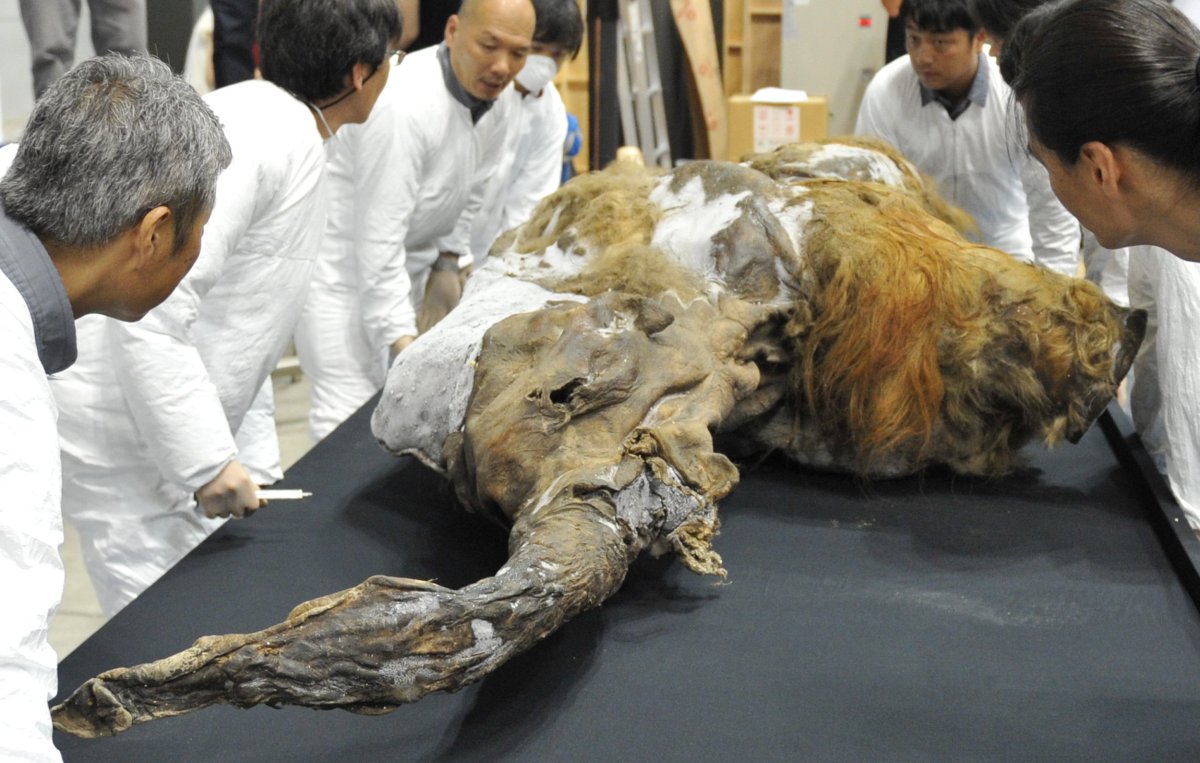Japanese and Russian scientists have awakened cells from a woolly mammoth that roamed Earth 28,000 years ago. The team inserted muscle cell nuclei from a well-preserved mammoth carcass into mouse ova, where they watched "signs of biological activity" taking place—a milestone they said would provide a platform to better understand extinct animal species.
The mammoth, named Yuka, was discovered in Siberia's permafrost in August 2010. It is regarded as one of the best-preserved mammoths ever discovered. The find was hugely exciting at the time, as it opened up the possibility of bringing the mammoth back to life—having well-preserved cells potentially allows scientists to create a clone of the specimen they came from. Researchers in Russia and Japan are currently working on this—although the development of a live animal is still a very long way off.
In the latest study, published in Scientific Reports, researchers recovered cell nuclei from some of the less damaged remains of Yuka. Previously, the same team had tried to use nuclear transfer to spark activity in 15,000-year-old mammoth cells to no success, "possibly owing to the technological limitations at that time and the inappropriate state of the frozen mammoth tissues," they wrote. However, the better state of preservation of Yuka meant another attempt at the experiment was successful.
Initial analysis showed nucleus-like structures in the mammoth's muscle tissue. Further tests revealed the mammoth remains had not been contaminated by the environment over the 28,000 years. From a small tissue sample, they collected 88 nucleus-like structures.
These structures were then inserted into mouse oocytes—the cell in the ovary that can divide to form an ovum. The researchers then watched what happened using a live-cell imaging technique.

"The mammoth nuclei showed the spindle assembly, histone incorporation and partial nuclear formation; however, the full activation of nuclei for cleavage was not confirmed," they wrote. Essentially, the scientist saw some of the nuclei placed in the mouse oocytes develop to a state just before the cells would have divided.
This does not mean the woolly mammoth could be brought back from extinction. Instead, the results provide a small step towards understanding the biological activities of nuclei taken from extinct animals.
"The results presented here clearly show us again the de facto impossibility to clone the mammoth by current NT [nuclear transfer] technology, our approach paves the way for evaluating the biological activities of nuclei in extinct animal species," they concluded.
Speaking to the Japan's Yomiuri Shimbun, Kei Miyamoto, one of the scientists involved, added: "Yuka's cell nuclei were more damaged than we thought, and it would be difficult to resurrect a mammoth as things stand. There's a chance, if we can obtain better-preserved nuclei."
Uncommon Knowledge
Newsweek is committed to challenging conventional wisdom and finding connections in the search for common ground.
Newsweek is committed to challenging conventional wisdom and finding connections in the search for common ground.
About the writer
Hannah Osborne is Nesweek's Science Editor, based in London, UK. Hannah joined Newsweek in 2017 from IBTimes UK. She is ... Read more
To read how Newsweek uses AI as a newsroom tool, Click here.








